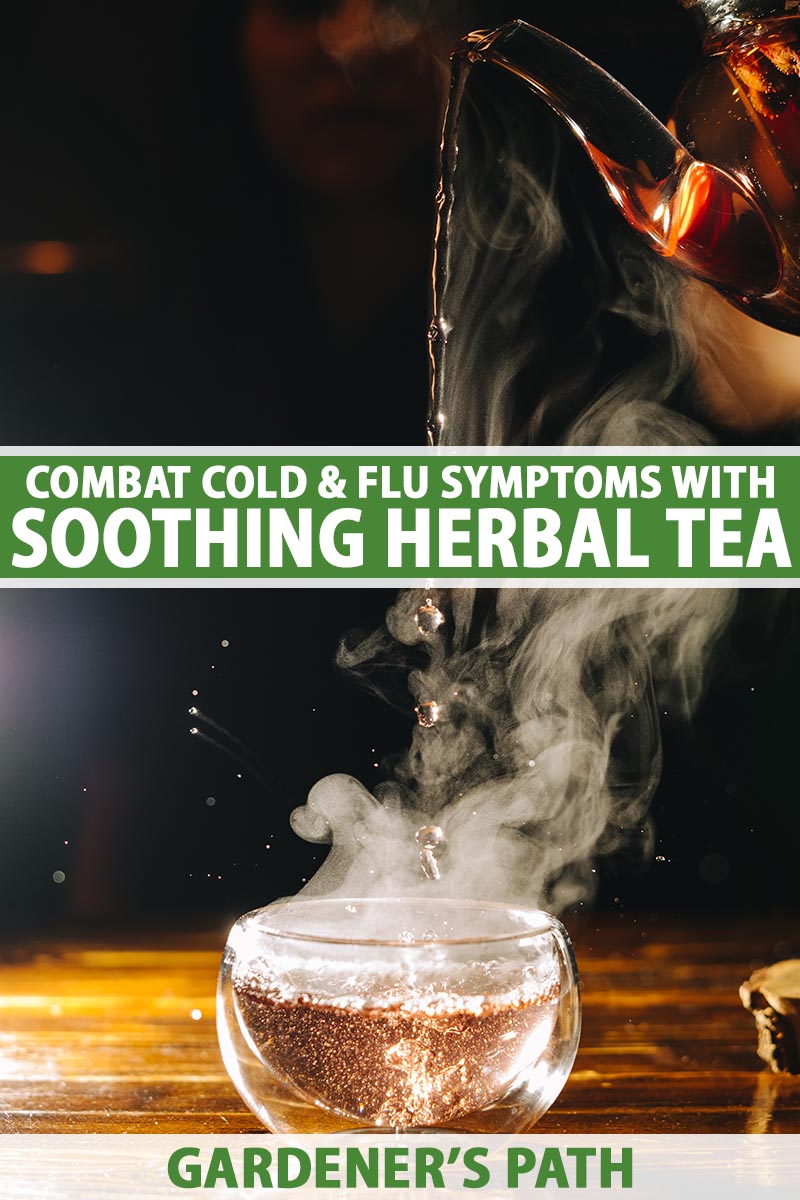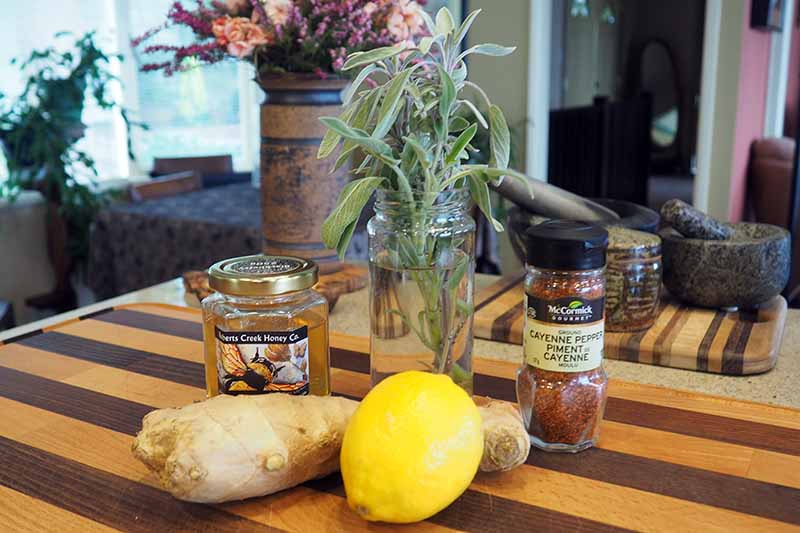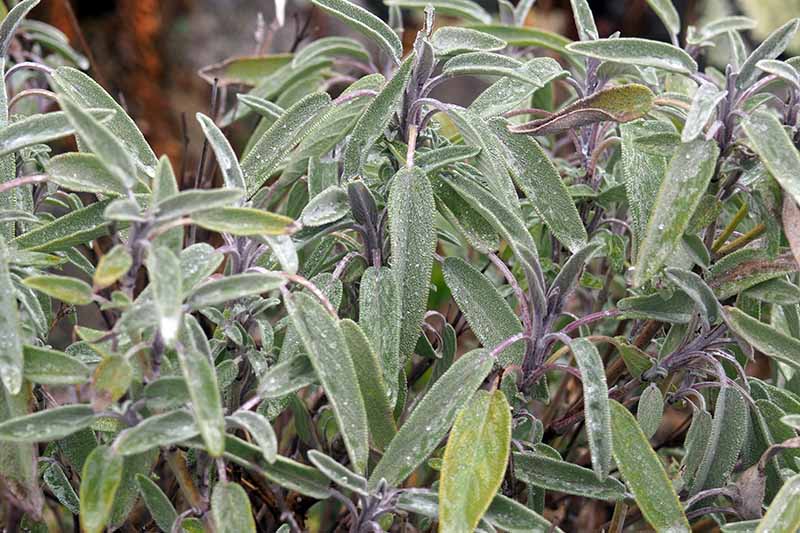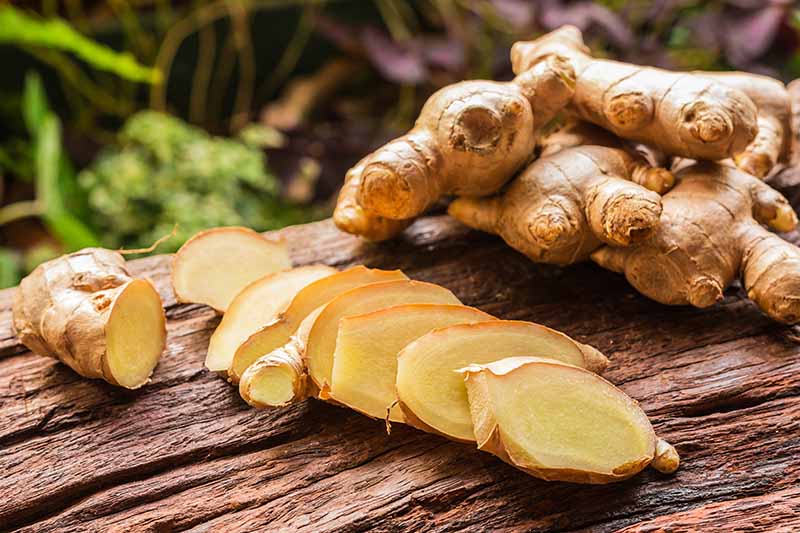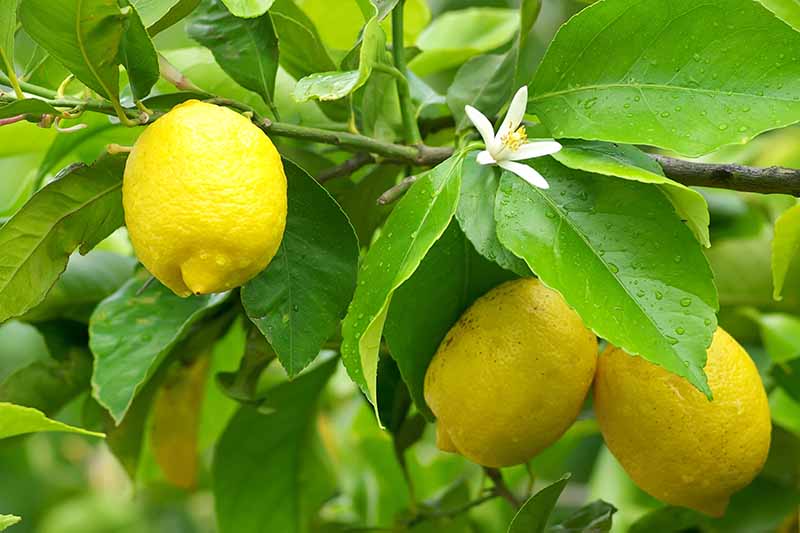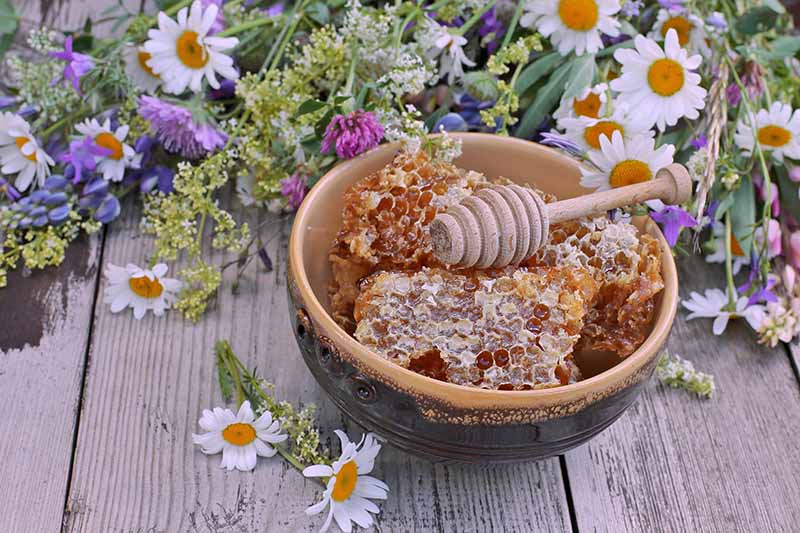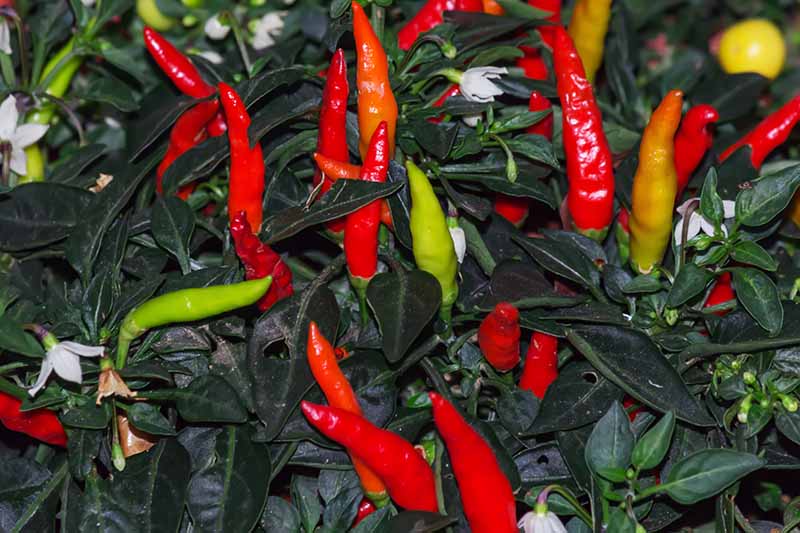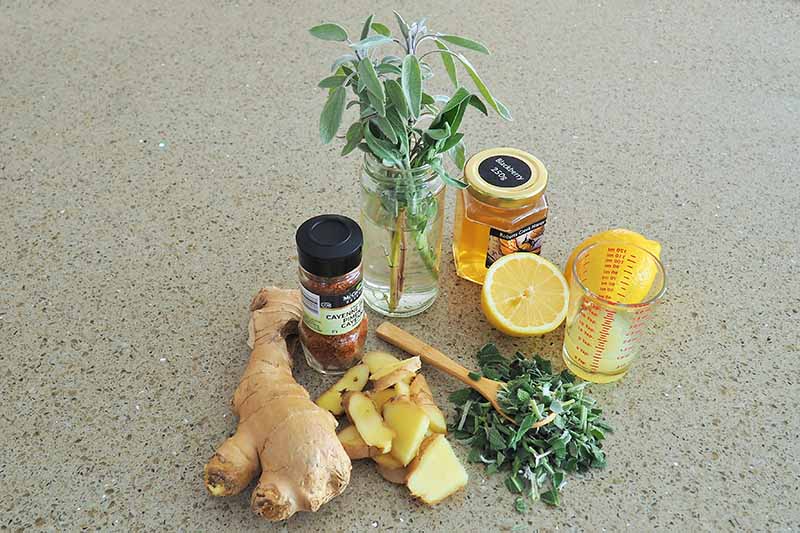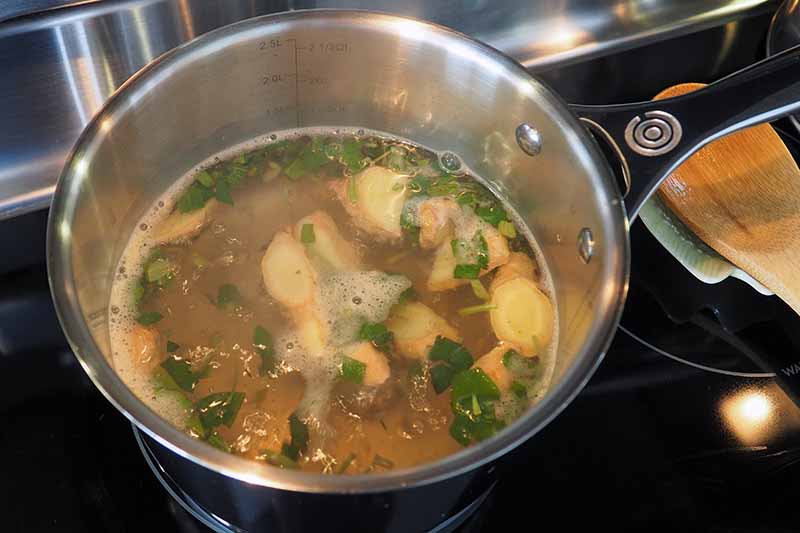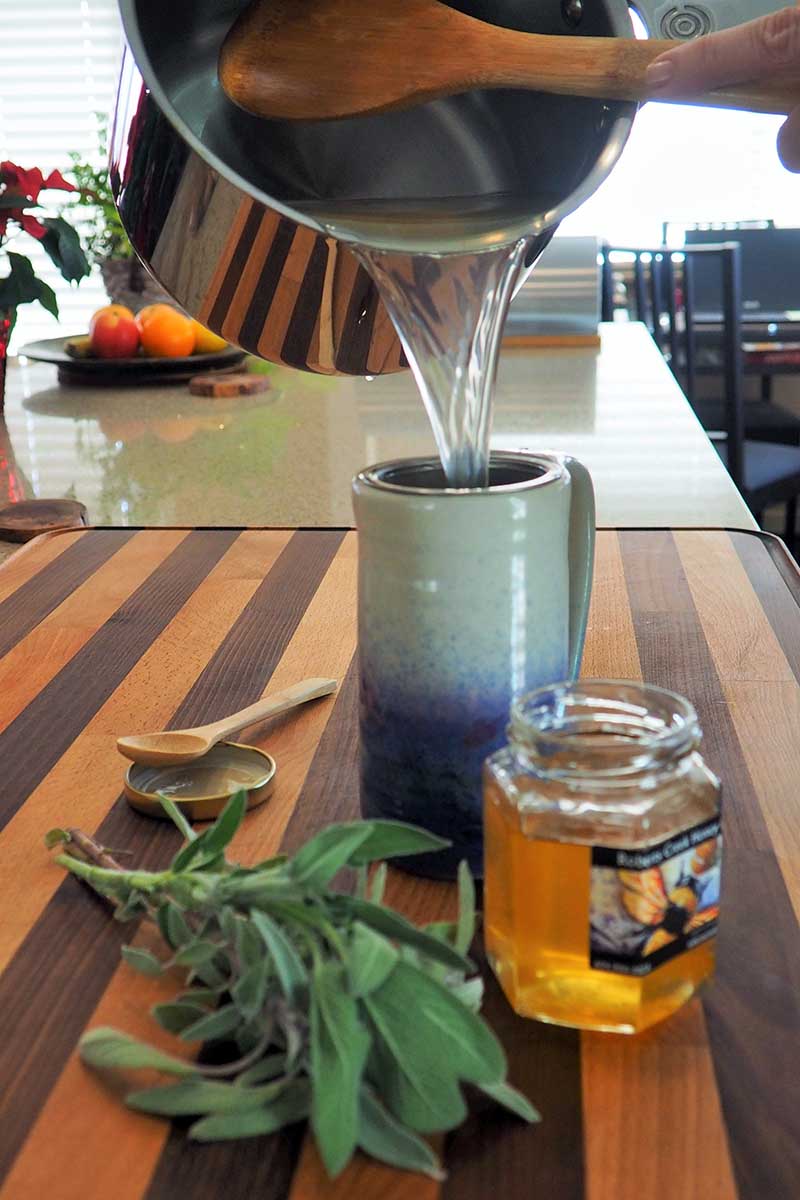But should you catch any of the season’s unfriendly bugs, fast, effective relief of common symptoms can be found in this herbal brew that’s made with all-natural ingredients available locally or from the garden. We link to vendors to help you find relevant products. If you buy from one of our links, we may earn a commission. This recipe is my adaptation of the concentrated decoction for colds and flu from Stephen Buhner’s invaluable manual “Herbal Antibiotics.” The decoction is used to alleviate symptoms of throat and upper respiratory infections, and when consumed as a soothing tea you get all the benefits of the ingredients plus the comforting and helpful properties of steam. Herbal Antibiotics Join us now to learn how and learn how to make soothing herbal tea to help alleviate symptoms of colds, coughs, and the flu. Here’s what’s ahead. A great addition to over-the-counter medications, relief is effective, fast, and natural. And most can be grown in your own garden, which is like a double-whammy of healing properties! Here’s a look at each ingredient:
Medicinal Sage
Sage, Salvia officinalis, has been used as a curative in folk medicine for millennia in treating a variety of disorders ranging from diarrhea, gout, and hyperglycemia to inflammation and rheumatism. Numerous studies have supported many of its beneficial health claims, primarily from its abundant levels of important flavonoids such as rosmarinic and ellagic acids. Areas of interest for its pharmacological activities include its anticancer, anti-inflammatory, antimicrobial, antioxidant, and hypoglycemic properties. For cold and flu symptoms, sage brings fast relief to congested respiratory systems and upset tummies, and it helps to prevent viral and bacterial infections as well. And although sage has a somewhat medicinal flavor in large amounts, the ginger, honey, and lemon in this herbal tea smooth the flavors for a soothing, deliciously sippable beverage. Sage is easily grown and adds beautiful, silvery foliage to the garden plus tall spires of pretty, blue-to-purple flowers in spring. Our guide on how to grow common sage has all the cultivation details.
Fierce Ginger
We’ve added ginger, Zingiber officinale, to our adaptation of Mr. Buhner’s recipe because several of its robust antiviral phytochemicals weaken rhinoviruses, one of the most common causes of colds. Other compounds like gingerol and shogaol, can help to relieve symptoms such as body aches, fever, coughs, and sore throats, and ginger is also known to effectively reduce nausea and stomach upset. Plus, we like the zippy taste! Ginger can be grown at home as a perennial in USDA Hardiness Zones 9-12, or as an annual in cooler regions. Our guide has all the steps on how to plant and grow ginger in your home garden.
The Antioxidant Punch of Lemons
Like all citrus fruits, lemons, Citrus limon, are naturally high in vitamin C, a powerful antioxidant. Foods high in vitamin C may help to strengthen the immune system to protect against the viruses that cause cold and flu, and are thought to help reduce the duration of cold symptoms. Along with its healing properties, lemon juice adds a lovely, piquant flavor to herbal tea that can help to ease a sore throat. Ever thought about growing your own lemon tree, but don’t have the room? A dwarf tree could be the answer! Our guide on how to grow dwarf citrus trees has all the info you need.
Soothing Honey
Sweet honey is wonderfully soothing, and rounds out the flavor of the other ingredients. It also has antibacterial and antiviral effects, and is known to reduce the pain of sore throats and the intensity of coughs. When possible, use a local wildflower source of raw honey to ensure pollen has been collected from flowers free of commercial chemicals. Or better yet, harvest some from your own hives!
Heat-Inducing Cayenne Pepper
Cayenne pepper, Capsicum annuum, is known as a thermogenic spice with analgesic properties. That is, it stimulates circulation, increases blood flow to the skin, and has a diaphoretic effect that induces perspiration – all of which help to reduce fever, relieve congestion, and reduce achiness. In addition, cayenne performs catalytic actions that enhance the efficacy of other herbs. So be sure to include some in your tea when you’re suffering from a fever, or head and chest congestion from a cold. And as cayenne does induce perspiration, bundle up to avoid catching a chill! For this recipe, you can use store-bought powdered cayenne pepper, or dehydrated homegrown peppers, ground up using a pestle and mortar. Hot peppers like cayenne can be cultivated in a sunny garden and do well in containers too. Learn how to plant and grow hot peppers in our guide.
Recipe for Soothing Herbal Tea
This soothing herbal tea should be served piping hot. While you sip, be sure to breathe the steamy vapors deeply to help loosen congested airways. Yield: 3-4 servings
Ingredients
4 heaping teaspoons coarsely chopped fresh sage leaves4-inch piece of ginger root, peeled and slicedJuice of 1 lemon3-4 tablespoons wildflower honey, or to tasteDash of cayenne powder (to induce perspiration — may be omitted if fever is not present)
Instructions
- First, gather and prep your ingredients. Wash the sage and ginger under cool, running water. Chop the sage coarsely, slice the peeled ginger into 1/4-inch-thick slices, and juice the lemon. Remove any seeds.
- In a small pot, add the chopped sage and sliced ginger to 24 to 32 ounces of water. Cover and bring just to a boil, then reduce the heat and simmer for 10 minutes.
- Remove from the heat. Just before serving, add the lemon juice and cayenne (if needed), stirring well. Strain into your favorite tea mugs.
- Sweeten each mugful with a generous spoonful of raw, local wildflower honey. Sit back, relax, and sip slowly to enjoy the spread of warmth and natural healing properties. Strain any leftover tea into a ceramic or glass jar, cover, and store in the refrigerator for up to three days. Reheat in a small saucepan as needed.
The Last Sip
When you’re in the acute phase of a cold or flu, drink several cups a day for effective pain relief and to reduce symptoms – you’ll feel better while you’re sick, and this herbal remedy may shorten the duration of your illness as well. Do you folks have any other favorite herbal remedies for cold season? Drop us a line in the comments section below. And check out some of our other articles on healing herbs next:
How to Grow Feverfew: A Medicinal and Visual DelightThe Many Uses and Benefits of Yarrow: A Healing HerbThe Top 5 Mediterranean Herbs: Growing, Eating, and Healing
